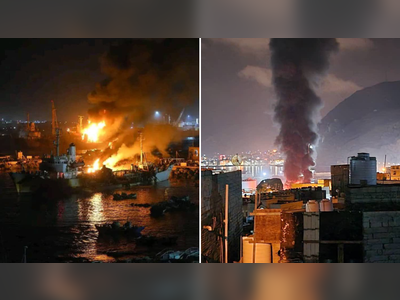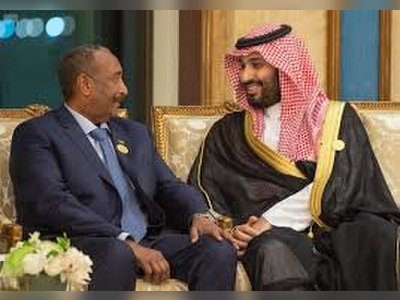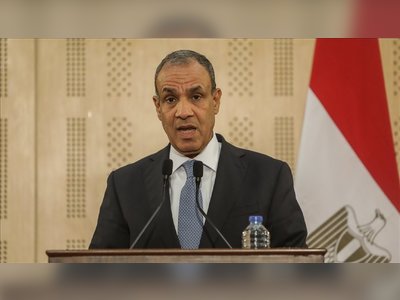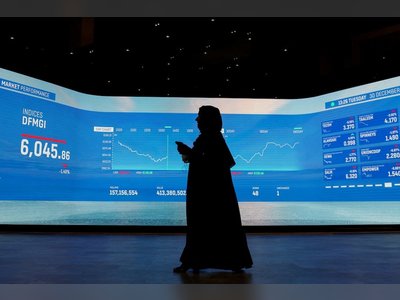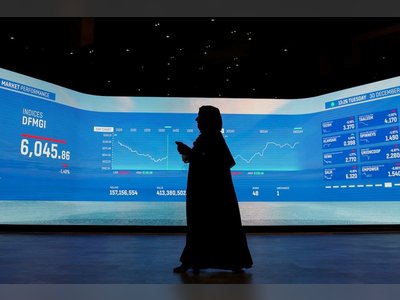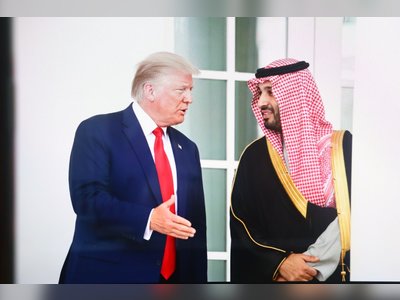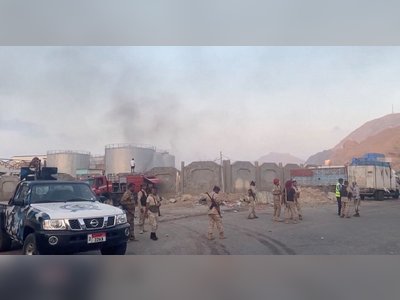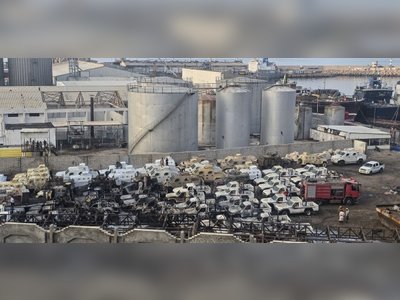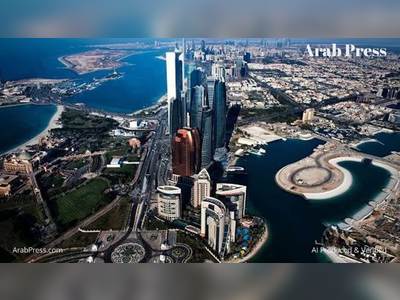Leadership in Iran in Disarray: Reports Emerge of Khamenei in a Coma and His Son Stealthily Selected as Successor
Speculation Surrounding the Health of Iran's Supreme Leader Ignites Controversy Over Succession Plans
Speculation is intensifying about the health of Iran’s Supreme Leader, Ayatollah Ali Khamenei, amid reports that he has entered a coma. According to Israeli media Ynet News, citing Iran International, the Assembly of Experts has supposedly met in secret to name Khamenei’s son, Mojtaba Khamenei, as his successor.
Iranian officials have not confirmed or denied these reports, but the possible ramifications of such a decision are significant, both domestically and internationally.
A Leadership Shift Veiled in Secrecy
The alleged selection of Mojtaba Khamenei as the next Supreme Leader reportedly occurred during a covert assembly meeting on September 26. Iran International claims the decision was enveloped in secrecy to avoid public unrest, with assembly members reportedly warned of severe penalties if information was leaked.
“The assembly agreed to maintain strict secrecy over the decision due to fears of widespread public protests,” the report states. This indicates a deep concern within Iran’s leadership about potential backlash from a population already facing economic struggles and increasing dissatisfaction with the regime.
Mojtaba Khamenei: A Contentious Successor
Choosing Mojtaba Khamenei as successor represents a notable and contentious step. Mojtaba, the second son of Ayatollah Khamenei, has long been seen as a powerful figure behind the scenes, reportedly managing crucial financial and political networks within the regime. However, his ascension to Supreme Leader would break with tradition, as Iran’s leadership is not designed to follow a hereditary model.
Critics argue this move could undermine the ideological foundations of the Islamic Republic, which has historically claimed to be a theocratic system driven by clerical merit rather than dynastic succession. Mojtaba’s limited public support and clerical standing could intensify perceptions of nepotism and further distance an already disillusioned public.
Potential Public Unrest
The secrecy surrounding the decision highlights the regime’s fear of public unrest. Iran has witnessed widespread protests in recent years, driven by economic crises, corruption allegations, and demands for greater political freedoms. If true, the reported succession plan could spark further unrest, as many Iranians see this concentration of power within one family as a betrayal of the Islamic Republic’s founding principles.
“The regime is already balancing precariously,” says political analyst Jay Douglas. “The Iranian public’s growing frustration with the government's domestic management could push discontent to a tipping point if they perceive a dynastic takeover.”
Implications for Regional and Global Dynamics
A leadership change in Iran could have major implications for the region and beyond. Ayatollah Khamenei has been pivotal in crafting Iran’s foreign policy, especially regarding its contentious relationships with the U.S., Israel, and Gulf Arab states. His departure, along with uncertainties about his successor’s legitimacy, might create a power vacuum or lead to shifts in Iran’s strategic aims.
Mojtaba Khamenei’s elevation could intensify tensions. Being closely tied to Iran’s hardline factions and the Revolutionary Guard, his leadership might signal a continuation—or amplification—of confrontational foreign policies, influencing nuclear negotiations and regional stability.
“Any shift in Iran's leadership is likely to send ripples through the Middle East,” Douglas observes. “However, a succession seen as illegitimate could destabilize Iran internally, making its policies more unpredictable.”
The Path Forward: Reality or Speculation?
While reports of Ayatollah Khamenei’s coma and the alleged succession remain unverified, they emphasize the fragility of Iran’s current political landscape. The regime’s silence on these rumors only fuels further speculation and uncertainty, both domestically and worldwide.
If the reports are accurate, the regime’s secrecy strategy might provide temporary reprieve but could also widen the rift between the government and its populace. Conversely, if these claims are false, they still highlight escalating tension and fragility within Iran’s ruling elite.
A Nation at a Turning Point
Iran stands at a critical juncture. Regardless of Ayatollah Khamenei’s condition, the challenges facing the Islamic Republic—from internal dissent to external pressures—demand a leadership with legitimacy and vision. The alleged move to position Mojtaba Khamenei as Supreme Leader could be viewed as a desperate effort to consolidate power, risking further erosion of public trust in a regime already under great strain.
As the world watches closely, the decisions made by Iran’s leadership could shape the nation’s future for years to come.
Iranian officials have not confirmed or denied these reports, but the possible ramifications of such a decision are significant, both domestically and internationally.
A Leadership Shift Veiled in Secrecy
The alleged selection of Mojtaba Khamenei as the next Supreme Leader reportedly occurred during a covert assembly meeting on September 26. Iran International claims the decision was enveloped in secrecy to avoid public unrest, with assembly members reportedly warned of severe penalties if information was leaked.
“The assembly agreed to maintain strict secrecy over the decision due to fears of widespread public protests,” the report states. This indicates a deep concern within Iran’s leadership about potential backlash from a population already facing economic struggles and increasing dissatisfaction with the regime.
Mojtaba Khamenei: A Contentious Successor
Choosing Mojtaba Khamenei as successor represents a notable and contentious step. Mojtaba, the second son of Ayatollah Khamenei, has long been seen as a powerful figure behind the scenes, reportedly managing crucial financial and political networks within the regime. However, his ascension to Supreme Leader would break with tradition, as Iran’s leadership is not designed to follow a hereditary model.
Critics argue this move could undermine the ideological foundations of the Islamic Republic, which has historically claimed to be a theocratic system driven by clerical merit rather than dynastic succession. Mojtaba’s limited public support and clerical standing could intensify perceptions of nepotism and further distance an already disillusioned public.
Potential Public Unrest
The secrecy surrounding the decision highlights the regime’s fear of public unrest. Iran has witnessed widespread protests in recent years, driven by economic crises, corruption allegations, and demands for greater political freedoms. If true, the reported succession plan could spark further unrest, as many Iranians see this concentration of power within one family as a betrayal of the Islamic Republic’s founding principles.
“The regime is already balancing precariously,” says political analyst Jay Douglas. “The Iranian public’s growing frustration with the government's domestic management could push discontent to a tipping point if they perceive a dynastic takeover.”
Implications for Regional and Global Dynamics
A leadership change in Iran could have major implications for the region and beyond. Ayatollah Khamenei has been pivotal in crafting Iran’s foreign policy, especially regarding its contentious relationships with the U.S., Israel, and Gulf Arab states. His departure, along with uncertainties about his successor’s legitimacy, might create a power vacuum or lead to shifts in Iran’s strategic aims.
Mojtaba Khamenei’s elevation could intensify tensions. Being closely tied to Iran’s hardline factions and the Revolutionary Guard, his leadership might signal a continuation—or amplification—of confrontational foreign policies, influencing nuclear negotiations and regional stability.
“Any shift in Iran's leadership is likely to send ripples through the Middle East,” Douglas observes. “However, a succession seen as illegitimate could destabilize Iran internally, making its policies more unpredictable.”
The Path Forward: Reality or Speculation?
While reports of Ayatollah Khamenei’s coma and the alleged succession remain unverified, they emphasize the fragility of Iran’s current political landscape. The regime’s silence on these rumors only fuels further speculation and uncertainty, both domestically and worldwide.
If the reports are accurate, the regime’s secrecy strategy might provide temporary reprieve but could also widen the rift between the government and its populace. Conversely, if these claims are false, they still highlight escalating tension and fragility within Iran’s ruling elite.
A Nation at a Turning Point
Iran stands at a critical juncture. Regardless of Ayatollah Khamenei’s condition, the challenges facing the Islamic Republic—from internal dissent to external pressures—demand a leadership with legitimacy and vision. The alleged move to position Mojtaba Khamenei as Supreme Leader could be viewed as a desperate effort to consolidate power, risking further erosion of public trust in a regime already under great strain.
As the world watches closely, the decisions made by Iran’s leadership could shape the nation’s future for years to come.
